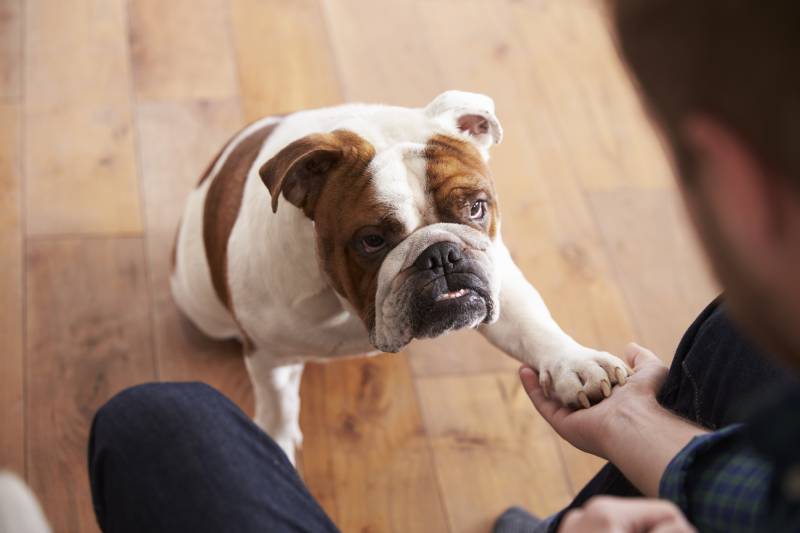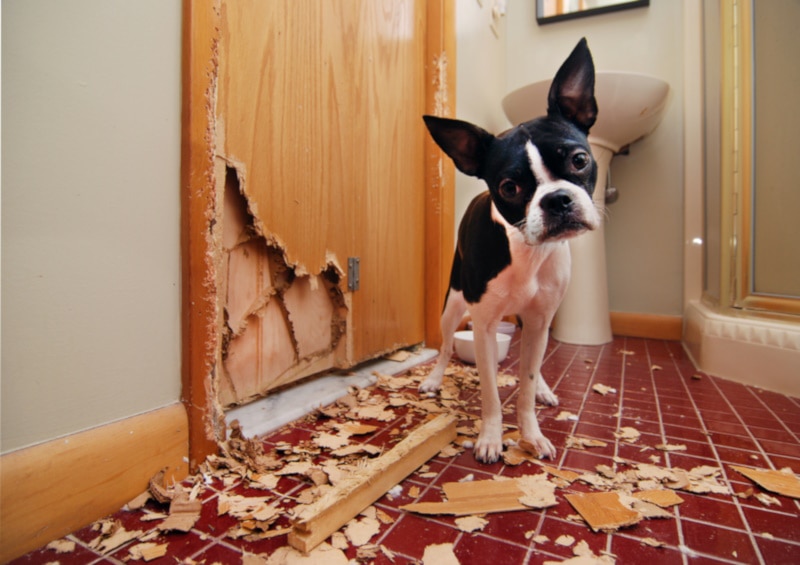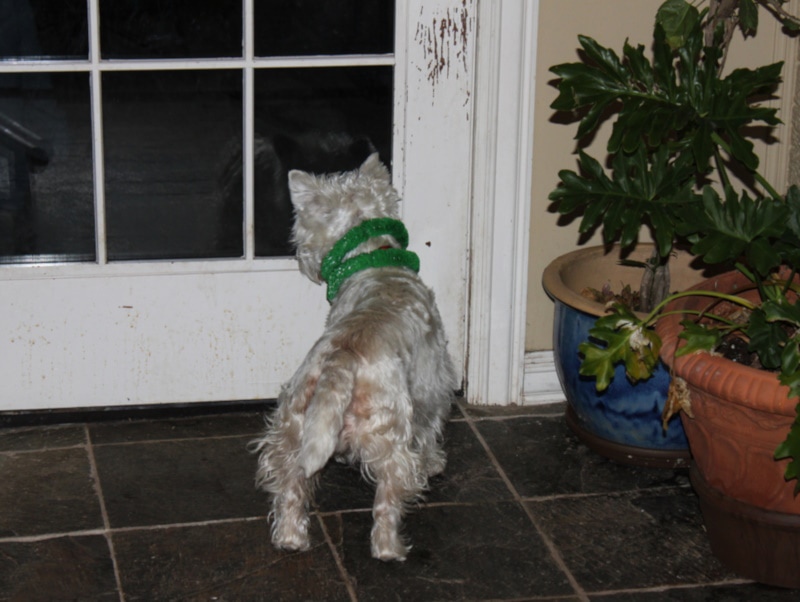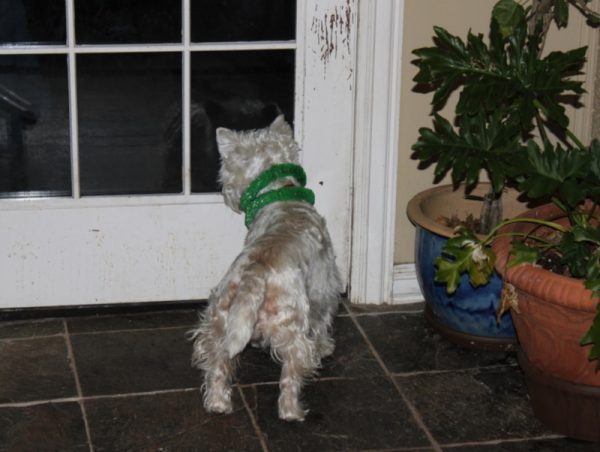Dogs scratching at doors is a common behavior, but it can ruin your once attractive and clean doors. Eventually, your doors will wear thin with repeated wear in one spot, not to mention the annoying sound of dog nails scraping. Dogs also run the risk of getting nail injuries from scratching, especially with interior wooden doors.
Fortunately, it’s simple to train your dog not to scratch at doors. The key is incentivizing proper behavior and discouraging unwanted behavior—in this case, scratching at doors. Here are some tips to teach your dog not to scratch.
The 7 Tips to Keep Your Dog From Scratching the Door
1. Give Your Dog Outlets for Energy
Some dogs scratch because of boredom, anxiety, frustration, or attention-seeking behaviors. If you work long hours and your dog is alone, it’s likely that they’ll find outlets for their excess energy. Often, this means destructive behaviors like scratching at doors.
You can prevent this behavior by taking your dog for long walks. A tired dog is a calm dog that is less likely to channel energy into ruining your things. Walking your dog is also good for bonding, especially if you allow your dog to sniff and explore their surroundings.

2. Prioritize Playtime
Exercise can help your dog, but they need more than just physical stimulation. Playtime and training help tire your dog out mentally, helping to prevent boredom and improve your bond. Play sessions like fetch, tug-of-war, a challenging puzzle game, or even going through some basic obedience and tricks will give your dog the attention they need while also sparing your doors from damage.
3. Redirect the Behavior
Dogs are great learners. You can reinforce the behavior you want—both intentionally and unintentionally—in how you react. For example, if you ignore your dog until they scratch at the door and then yell or scold, they’ve succeeded in getting your attention. Even negative attention is an improvement over no attention.
The goal of redirecting behavior is rewarding the behavior you want by substituting good things for bad things. With scratching, you can redirect your dog to scratch a scratch pad instead of the door. Interrupt your dog while scratching by calling them over and offering the alternative, then rewarding them when they engage with that instead of the door. Over time, your dog will learn that the new behavior (scratching a scratch pad) is preferable to the door.

4. Leave Them With Fun Distractions
Some dogs don’t like to be alone. If you have to be gone for a long time, give your dog something to take up the time and focus their energy. For example, hiding treats around the house and allowing your dog to search for them while you’re gone takes a lot of mental focus and energy. Puzzle toys or lick mats are also good options to keep your dog occupied.
It’s important to be careful with what you leave while your dog is alone, however. Some toys or chews shouldn’t be given unsupervised, such as deer antlers or squeak toys if your dog is a destructive chewer. Also, if you have multiple dogs in the same household, avoid toys or activities that can cause them to fight over resources.
5. Don’t Reward Bad Behavior
Consistency is key to dog training. Even if you don’t mean to, you can accidentally reinforce the scratching behavior. For example, if your dog scratches and you immediately take them out for a walk or to play, they will connect that scratching gets them what they want.
Instead, wait until your dog stops scratching the door for a moment. Then, you can engage and reward a new behavior. You want to reward them by stopping, not accidentally connecting the scratching with fun activities and rewards.

6. Don’t Punish the Behavior
Punishment like yelling at or hitting your dog doesn’t teach them to stop. It has a negative effect, especially if your dog is anxious, as it only worsens the feelings of stress, anxiety, and fear. If you catch your dog in the middle of scratching or any other destructive behavior, interrupt them by calling the dog’s name and redirecting them.
7. Identify Underlying Causes
A dog that scratches at a door could simply be seeking attention or trying to get to you, but there could be other causes. Part of correcting the behavior is managing triggers. Sometimes, a dog will scratch at a door because there are other dogs, cats, or wildlife outside that they want to get to. Managing this behavior could involve putting up barriers so your dog can’t see outside or playing music while you’re gone to minimize outside sounds while also training your dog to prefer alternative behaviors.
If your dog scratches the door out of separation anxiety, that can be more challenging to correct. Dogs that have separation anxiety will also pant or pace while you’re gone. Separation anxiety only worsens with time and without treatment. It’s best to consult with a veterinary behaviorist to get a behavior modification plan that may involve medication to alleviate anxiety while working on training.

Should My Dog Be Crated?
If your dog shows destructive behaviors like scratching the door, a crate or X-pen can be a lifesaver for your home. You can keep your dog away from triggers and protect both them and your door from damage while you’re away.
That said, it’s not enough to put your dog in the crate and leave them for hours on end. Crate training properly takes weeks or months of effort. Take your time with introducing the crate and using crate games to build a positive association. Eventually, your dog may prefer to sleep in their crate with the door open.
Also, avoid using the crate as a form of punishment. If your solution is to put your dog in the crate as a “time out” for bad behavior, they’ll never associate it with a place of comfort or security. Worse yet, their anxiety will only increase whenever you try to put them in it.
Summary
A dog that scratches at doors can be annoying at best, but they can do serious damage to your doors or injure themselves at worst. With consistent training, enrichment, and positive reinforcement, you can train your dog to stop scratching your doors and develop a stronger bond in the process.
Featured Image Credit: Vineyard Perspective, Shutterstock













